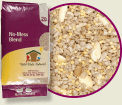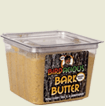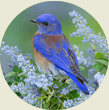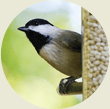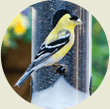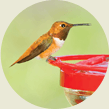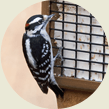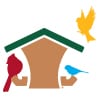
More than 300 bird species found in North America during the summer will migrate to Latin America or the Caribbean, some covering distances of nearly 7,000 miles. Parks, backyards and nature refuges across the country will host these winged visitors for the next few weeks as the birds make their way to their fall and winter destinations. Here are three things you can do to help them along on their journey.
1. Provide Food
Provide foods high in fat such as suet, bark butter, and a seed blend with lots of sunflower seeds to help birds refuel. They need high calorie foods to help replenish their energy supply. Putting out bird feeders, seed, fruit and nectar feeders, and fruit can help birds along their journey.
2. Provide Water
Whether they are feeder visitors or not, birds need water for drinking, bathing and preening. Birds need open water sources for drinking and keeping their feathers maintained for flight and proper insulation as the nights get colder. Providing water can be as simple as putting out a bird bath or as complicated as installing a pond with a creek and waterfall.
3. Provide Habitat or Shelter
Birds need a safe place to rest. You can create and restore habitat at home, at your workplace and in your local park or wildlife refuge. You can make any property attractive to birds by offering nesting habitat.
Additional Tips:
- You can start by evaluating your property. It is important to remember that a diversity of habitat encourages a larger variety of birds.
- Dead trees and brush piles provide shelter, nest sites and food (insects) for migrating birds.
- Landscape the yard with native evergreen and fruit bearing trees, shrubs, grasses, and vines. Design the garden so that plants flower and fruit throughout the spring, summer and fall.
While migration is still not completely understood, it appears that some birds orient themselves by the stars on clear nights while others seem to have a built-in magnetic compass. Some birds travel over large bodies of water, and birds commonly lose one fourth to one half of their body weight during such over-water migration.
For more information on how you can help migrating birds, visit your local WBU store.

